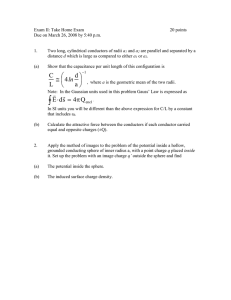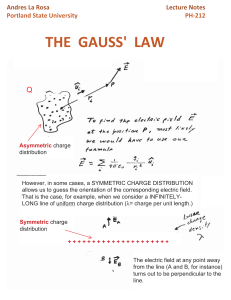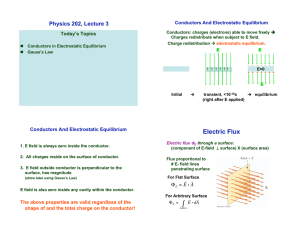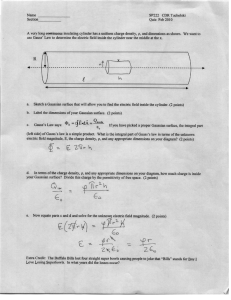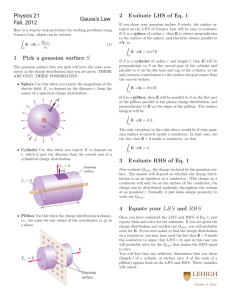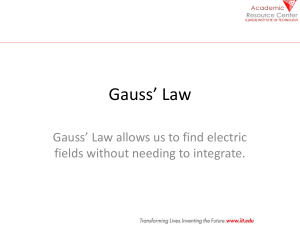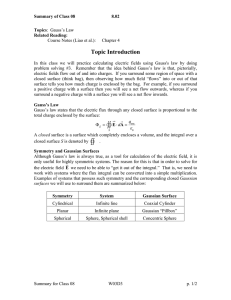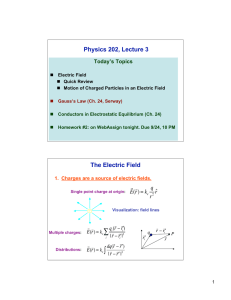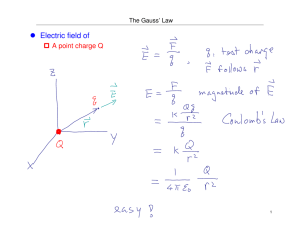Gauss' Law Explained: Electromagnetism Lecture Slides
advertisement
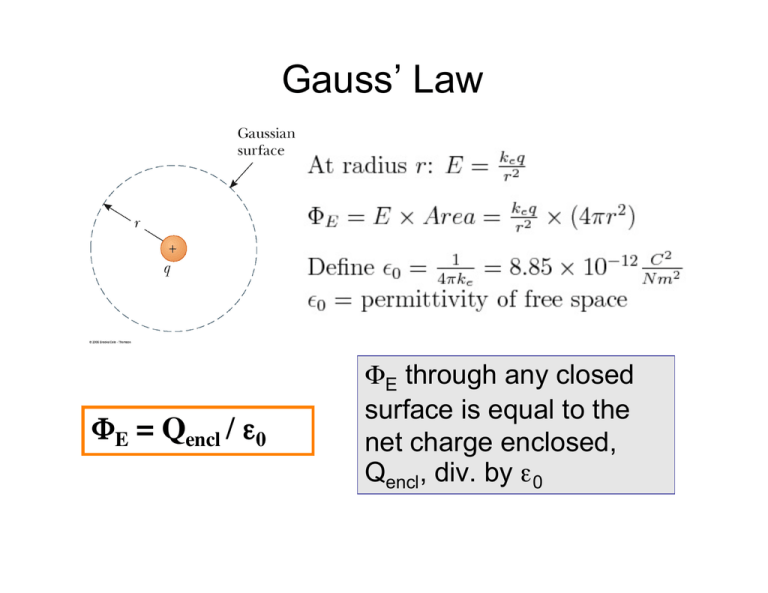
Gauss’ Law ΦE = Qencl / ε0 ΦE through any closed surface is equal to the net charge enclosed, Qencl, div. by ε0 Sample Gaussian surfaces Hint: Choose surfaces such that E is ⊥ or || to surface! Gauss’ Law: A sheet of charge Define σ = charge per unit area 2 planes with opposing charges E=–σ/(2ε0)j^ _ _ _ _ _ _ _ _ ^ E=+σ/(2ε0)j _ _ _ _ _ _ ^ + + + + + + + + + + + + + E=–σ/(2ε0)j^ + E=+σ/(2ε0)j 2 planes with opposing charges E=0 outside _ + _ + _ + _ + _ + _ + _ + Inside: ^ ^ E=+σ/(2ε0)j+σ/(2ε0)j = σ/ε0 ^j E=0 outside 2 planes with opposing charges Gauss’ Law: Charged Spherical Shell At r < a: E = 0. Gauss’ Law: Charged Spherical Shell E4πr2 Divide both sides by area: E= Qencl 4πε0r2 At r > b, E looks like that from a single point charge Q Ex. 19.11, then 19.10 E-field a distance r from an infinite line of charge (charge per length λ): Deriving E(r) = 2keλ/r E-field associated with a solid sphere of charge. Total charge = Q, distributed uniformly. Radius a. Outside sphere (r > a), E(r) = keQ/r2 Inside sphere (r<a), E(r) = keQr/a3 (inside, enclosed charge increases with radius as r3, and area of the Gaussian surface increases with r2 -- so E is proportional to r.)
